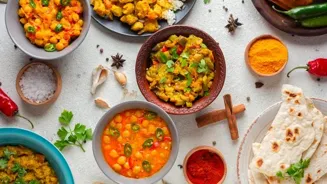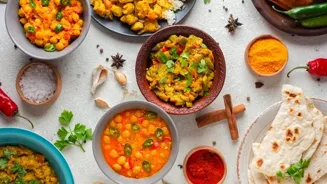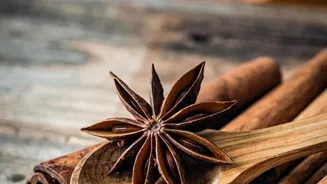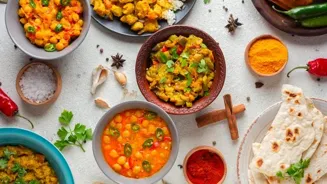Dive into the World of Indian Spices: Uncover Flavor and Health Benefits! Read on for a spicy journey
India, the land of vibrant colours and diverse cultures, is also renowned as the "Spice Garden of the World."
For centuries, Indian spices have been integral to our cuisine, adding not just flavour but also offering a treasure trove of health benefits.
From the humble turmeric to the aromatic cardamom, each spice holds a unique story and contributes to the rich tapestry of Indian culinary heritage.
Indian spices: ancient remedies with modern health benefits
Our ancestors understood the power of spices, using them not only for flavouring food but also as potent medicines in Ayurveda, the ancient Indian system of medicine.
Today, modern science is increasingly validating these traditional uses, revealing the remarkable health properties that these spices possess. This article will take you on a journey through the fascinating world of Indian spices, exploring their flavours, benefits, and usage in everyday cooking.
Let’s discover how incorporating these magical ingredients can enhance both your meals and overall well-being.
Turmeric: versatile spice with health benefits & cultural significance in Indian cuisine
Turmeric, with its vibrant yellow colour, is arguably the most well-known Indian spice. Its active compound, curcumin, boasts powerful anti-inflammatory and antioxidant properties.
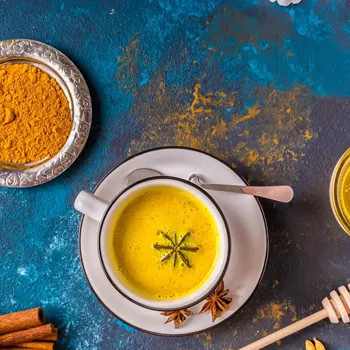
Studies suggest that turmeric can help alleviate joint pain, improve brain function, and even protect against certain chronic diseases. Incorporating turmeric into your daily diet is easy – add a pinch to your vegetables, dals, or even a warm glass of milk (haldi doodh) before bedtime.
The use of turmeric in religious ceremonies also signifies its importance in our culture, representing purity, prosperity, and healing.
Beyond its health benefits, turmeric adds a subtle earthy flavour and beautiful colour to culinary preparations, making it a staple ingredient in countless Indian dishes. From lentil soups to vegetable curries, the versatility of turmeric ensures it rightfully holds a place of prominence in every Indian kitchen, enriching both flavour and health
Cumin: versatile spice with health benefits in Indian cuisine
Cumin, or jeera as it's commonly known, is another essential spice in Indian households. These tiny seeds, with their warm and earthy flavour, are often used whole or ground in a variety of dishes. Cumin is known to aid digestion, boost immunity, and help regulate blood sugar levels.
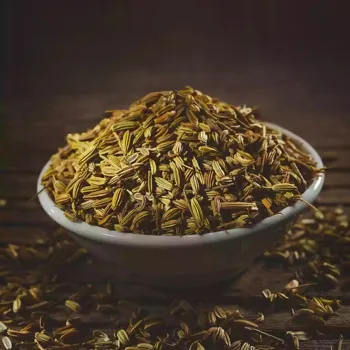
A simple way to incorporate cumin into your diet is to temper it in oil at the beginning of cooking or roast the seeds and grind them into a powder to sprinkle over salads or yogurt.
The aroma of cumin being roasted can often be the first sign that someone is about to start cooking a flavourful meal, filling the kitchen with a delightful, stimulating scent.
From simple everyday dishes to more elaborate festive meals, the subtle yet distinctive flavour of cumin adds a layer of depth and complexity, making it an indispensable ingredient.
Further, cumin based drinks, such as jal jeera, are especially used during summer in Indian households to stay cool and hydrated.
Coriander's dual use in Indian cuisine for flavor and health benefits
Coriander, both the seeds (dhania) and the fresh leaves, are integral to Indian cuisine. The seeds offer a warm, citrusy flavour, while the leaves provide a fresh, vibrant aroma.
Coriander is believed to have anti-inflammatory and antimicrobial properties, and it may also help lower cholesterol levels and improve digestion. Add coriander leaves to your stews as garnish and make sure to include it in making chutneys.
Coriander seeds can be roasted and ground into a powder for use in spice blends or added whole to curries for a subtle flavour.
The versatility of coriander is evident in its extensive use across different cuisines in India, from the North to the South, each region utilising this spice in distinct and unique ways.
The contrasting flavours of the seeds and leaves provide a balance of taste and fragrance, essential for creating a truly memorable culinary experience.
Cardamom, the "Queen of Spices," enhances flavor and aroma in various dishes
Cardamom, often referred to as the "Queen of Spices," is prized for its intense aroma and sweet, floral flavour. There are two main types: green cardamom, which is more common and has a delicate flavour, and black cardamom, which has a smoky and bolder taste.
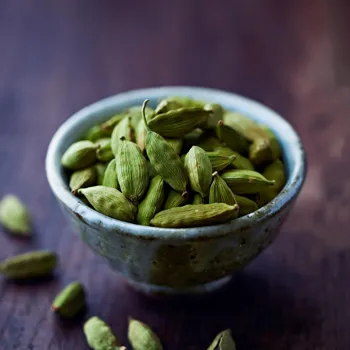
Cardamom is known to aid digestion, freshen breath, and have antioxidant properties. It is widely used in desserts, sweets, and beverages like chai (Indian tea).
The aroma of cardamom is often associated with festive occasions and celebrations, lending a touch of elegance and sophistication to any dish. From the rich and creamy kheer to the fragrant biryani, cardamom elevates the sensory experience, leaving a lasting impression.
For a cup of tea, you can bruise some cardamom pods and add them along with tea leaves. This gives your everyday tea an aromatic favour along with some health benefits.
Ginger: versatile spice with culinary and medicinal benefits
Ginger, with its pungent and spicy flavour, is not only a culinary staple but also a powerful medicinal herb. It is known for its anti-inflammatory and anti-nausea properties, and it can also help relieve cold and flu symptoms.
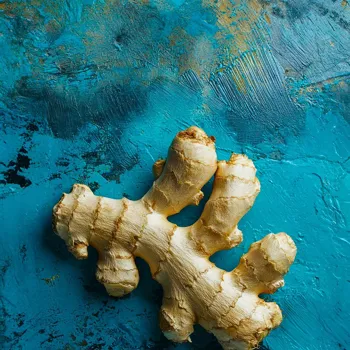
Ginger can be used in a variety of ways – grated fresh into stir-fries, added to tea, or pickled into a condiment. The warming sensation produced by ginger is particularly welcome during the colder months, providing a comforting and therapeutic effect.
From ginger-garlic paste, which forms the base of many Indian curries, to the refreshing ginger tea, this spice is an indispensable part of our daily lives. Also, small pieces can be chewed raw to relieve indigestion.
It adds a unique zing to dishes while contributing to our overall well-being, making it a valuable addition to every Indian household.
Chilli peppers enhance Indian cuisine with spice and health benefits
Chilli peppers, available in a wide range of varieties from mild to fiery, add spice and heat to Indian dishes. They contain capsaicin, a compound that has antioxidant and anti-inflammatory properties, and may also help boost metabolism and relieve pain.
It is important to use chilli peppers carefully, as too much can overwhelm a dish. Depending on the variety, chillies can be used fresh, dried, or powdered.
Indian cuisine showcases the diverse use of chillies, with each region having its unique preference for the level of spiciness and the type of chilli used. From the fiery vindaloo of Goa to the milder curries of Kerala, chillies play a crucial role in defining the tastes of each region..
The inclusion of chillies in food not only adds flavor but may also have a psychological effect, eliciting feelings of excitement and satisfaction, making it a vital ingredient in our culinary heritage.
AI Generated Content. Glance/InMobi shall have no liability for the content